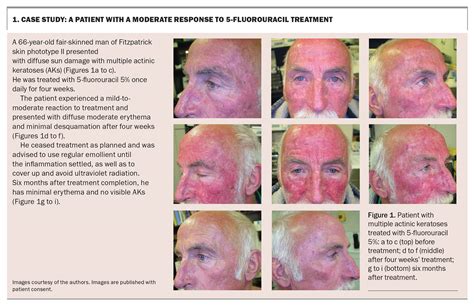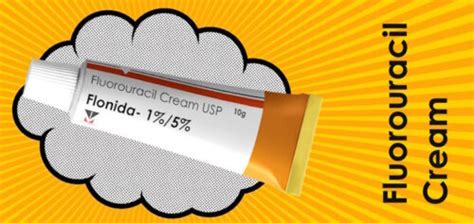Intro
Discover how Fluorouracil cream treats skin conditions like actinic keratosis, basal cell carcinoma, and solar keratosis, through topical chemotherapy, DNA inhibition, and cell regeneration, promoting healthy skin.
The use of fluorouracil cream has become increasingly popular in recent years, particularly for the treatment of certain skin conditions. Fluorouracil, also known as 5-fluorouracil or 5-FU, is a topical cream that has been widely used for decades to treat various skin disorders. Understanding how fluorouracil cream works is essential for individuals who are considering using this treatment option. In this article, we will delve into the mechanisms of action of fluorouracil cream and explore its benefits and uses.
Fluorouracil cream is a topical chemotherapeutic agent that belongs to the class of antimetabolites. It works by interfering with the growth and proliferation of abnormal cells, ultimately leading to their death. This cream has been used to treat a range of skin conditions, including actinic keratosis, basal cell carcinoma, and superficial squamous cell carcinoma. The effectiveness of fluorouracil cream in treating these conditions has made it a popular choice among dermatologists and patients alike.
The importance of understanding how fluorouracil cream works cannot be overstated. By grasping the mechanisms of action of this cream, individuals can make informed decisions about their treatment options and better manage their skin conditions. Furthermore, knowledge of the benefits and potential side effects of fluorouracil cream can help individuals to use this treatment safely and effectively. In the following sections, we will explore the ways in which fluorouracil cream works and its applications in treating various skin conditions.
Introduction to Fluorouracil Cream

How Fluorouracil Cream Works

Mechanism of Action
The mechanism of action of fluorouracil cream involves several key steps: * Absorption: The cream is absorbed into the skin, where it is converted into its active form, FdUMP. * Binding: FdUMP binds to the enzyme thymidylate synthase, inhibiting its activity. * Inhibition of DNA synthesis: The inhibition of thymidylate synthase prevents the production of thymidine, which is essential for DNA replication. * Cell death: The lack of thymidine ultimately leads to the death of abnormal cells.Benefits of Fluorouracil Cream

Some of the key benefits of fluorouracil cream include:
- Effective treatment of skin conditions: Fluorouracil cream has been shown to be effective in treating a range of skin conditions, including actinic keratosis, basal cell carcinoma, and superficial squamous cell carcinoma.
- Easy to use: The cream is relatively easy to use and can be applied directly to the affected skin area.
- Available in various strengths: The cream is available in various strengths, making it suitable for individuals with different skin types and conditions.
Applications of Fluorouracil Cream

Treatment Options
Fluorouracil cream can be used as a standalone treatment or in combination with other treatments. Some of the treatment options that may be used in conjunction with fluorouracil cream include: * Cryotherapy: Cryotherapy involves the use of liquid nitrogen to freeze abnormal cells, which ultimately leads to their death. * Surgical excision: Surgical excision involves the removal of abnormal cells or tumors through surgery. * Photodynamic therapy: Photodynamic therapy involves the use of a light-sensitive medication and a special light to destroy abnormal cells.Side Effects of Fluorouracil Cream

Managing Side Effects
To manage the side effects of fluorouracil cream, individuals can take several steps: * Apply a moisturizer: Applying a moisturizer to the affected skin area can help to reduce dryness and irritation. * Avoid scratching: Avoiding scratching the affected skin area can help to prevent further irritation and infection. * Use a gentle cleanser: Using a gentle cleanser can help to reduce the risk of irritation and dryness.Conclusion and Future Directions

We invite you to share your thoughts and experiences with fluorouracil cream in the comments section below. Have you used fluorouracil cream to treat a skin condition? What were your results, and what side effects did you experience? By sharing your experiences, you can help others who are considering using fluorouracil cream to make informed decisions about their treatment options.
What is fluorouracil cream used for?
+Fluorouracil cream is used to treat various skin conditions, including actinic keratosis, basal cell carcinoma, and superficial squamous cell carcinoma.
How does fluorouracil cream work?
+Fluorouracil cream works by interfering with the growth and proliferation of abnormal cells, ultimately leading to their death.
What are the side effects of fluorouracil cream?
+The side effects of fluorouracil cream include redness and irritation, itching and burning, and dryness and flakiness.
